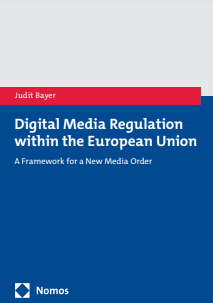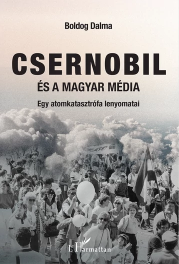Contents – Spring-Summer 2017
Bátorfy, Attila:
Bátorfy, Attila:
From state capture to market capture
The article analyzes changes in the Hungarian media landscape after 2014 under the third government of Prime Minister Viktor Orbán. The reshaping of the Hungarian media system started in 2010, and the vulnerability of the media was deeply rooted in the 2009 recession. The financially weak, mainly multinational, companies could not and did not want to guard their assets against the government, then they sold their lossmaking companies to businessmen and oligarchs linked to the prime minister. The transactions were financed mostly from state loans; now, the new government-allied media’s financial background mainly comes from state advertising. Meanwhile, the government and the prime minister himself have built a completely new loyal media, and put pressure on the critical or independent media with administrative, financial and propaganda techniques. The instruments of pressure are similar to those in Putin’s Russia and Erdogan’s Turkey, but Orbán uses them carefully and differently by masking them as so-called “free market moves” to mislead the EU-institutions.
From state capture to market capture
Médiakutató Spring-Summer 2017 pp. 7-30
Bernáth, Gábor – Messing, Vera:
Bernáth, Gábor – Messing, Vera:
Security threat or humanitarian disaster?
The paper investigates the coverage of three crucial events of the ‘refugee crisis’ during the summer and early autumn of 2015 by the Austrian and Hungarian media. The analysis covers a sample of the mainstream news media: television channels, broadsheets and tabloid newspapers in Hungary and Austria. The aim of the research was to investigate how media framed events related to the refugee crisis; which actors were allowed to voice their experiences and opinions; and what visual and narrative representations shaped the coverage of the events. The analysis reveals the extent to which many significant elements of the Hungarian government’s propaganda such as blaming the victims, inflicting fear, framing the refugee crisis as a national security issue came to rule the Hungarian media coverage. Some of the media used such framing uncritically in their texts and visual representations, but political meaning production infiltrated all media to some extent. Meanwhile, in Austria political actors and the media framed the crisis as a humanitarian issue and emphasized the civic engagement of Austrian citizens in a wave of solidarity with the refugees.
Security threat or humanitarian disaster?
Médiakutató Spring-Summer 2017 pp. 33-53
Sükösd, Miklós:
Sükösd, Miklós:
Buddhism in the media Interpretive frameworks in American, British, and English-language Chinese newspapers
How does contemporary media represent Buddhism? This paper provides a quantitative framing analysis of American, British and Chinese (English language) newspapers between 2001 and 2013. Although the most frequently used frames (cultural, religious, political) are the same in all three countries, there are major differences between as well as within countries. In the Western press, the subject of meditation-centered Western Buddhism enters the media. In Hong Kong, the press emphasizes the everyday, practical issues of traditional Buddhism. Beijing’s party press relates Buddhism to Chinese national identity and represents an official propaganda line regarding Chinese and Tibetan Buddhism. The logic of religion conflicts with media logic as religious concepts and practices do not fit newspaper sections and media frames. The frames used by journalists brake down into parts and decontextualize religious practice.
Médiakutató Spring-Summer 2017 pp. 55-74
Fényes, Erika:
Fényes, Erika:
Literary winter-ice-cream or secular ritual?
Nyáry Krisztián is the author of a uniquely popular series of books: he discusses the private lives, especially the love life, of classic literature writers and poets. This study analyzes the reasons of his books’ popularity compared to the high-brow literature history books. It also examines the hypocratic and self-punishing attitude of the critical intellectuals relating to all types of consumption of popular culture.
Literary winter-ice-cream or secular ritual?
Médiakutató Spring-Summer 2017 pp. 83-93
Buchmüller, Péter:
Buchmüller, Péter:
The Representation of the Jews of Kőszeg, in the 'Kőszeg and Vidéke' weekly newspaper between 1909 and 1939.
The increasing level of antisemitism was the main formative element of political and public communication in Hungary during and after World War I. The Hungarian state strived to demolish the results of the previous era, including the emancipation of Jews that was achieved at the end of the 19th century. While Jews were regarded as equal citizens before World War I, they were scapegoated during the examined period and the state tried to gradually exclude them from the political concept of the nation. Only a few months after the signing of the Trianon peace treaty (in Versailles) was a new bill passed on the numerus clausus in order to discriminate Jews by limiting their ratio at universities in an effort to support the Christian Hungarian students in education. During the period between the two World Wars, the political and social environment radically changed with regards to Jewish citizens in Hungary, as manifested in the first Jewish Act in 1938.
Médiakutató Spring-Summer 2017 pp. 97-107
Béresi, Ákos:
Béresi, Ákos:
Satan incarnated
Julius Streicher’s satiric newspaper, Der Stürmer was the nadir of journalism of the 20th century. It was absolutely primitive, rife with lies, and incited to discrimination, but its issues have a huge value as sources if we want to see the National Socialist Germany in its reality. The history of this newspaper bears a close relation to NSDAP’s history. This study presents the 22 year-long history of Der Stürmer. I try to show how this newspaper represented Jews as criminals from the beginning until the last hours of the Third Reich. How did this kind of representation belong to the general and official ideology of National Socialism? How did the newspaper change in the two decades of its history, and what were the reasons behind these changes? What were the aspects of Jewish life that its authors and editors mostly tried to criminalize, and what were the areas where Jewish people represented as criminals lived? However it is hard to find the answer, we have to ask the question of what reactions followed the propaganda of this newspaper. Finally, this work also studies how the anti-Semitic measures were represented in Der Strümer’s articles.
Médiakutató Spring-Summer 2017 pp. 109-112
Kriskó, Edina:
Kriskó, Edina:
New challenges in the age of virtual and augmented realities
This study will navigate the readers into the word of virtual and augmented realities. It aims to highlight some new challenges and ways of misuse that many professions from communications to law enforcement have to reconsider in the digital era. The main question is, what happens when we step into the VR, what new dimensions of our vulnerability open up, what kind of phenomena have to be discussed in multidisciplinary approaches. The nature of cyber crime has changed and so has its scene, the phenomenon of privacy is always changing as we all change ourselves and transform the cultural environment. Our lives are more and more intertwined by technology, mediated realities and surveillance. Only one step is the transhuman being, so it is time to take a look at the direction we are heading to.
New challenges in the age of virtual and augmented realities
Médiakutató Spring-Summer 2017 pp. 125-137
Zelena, András:
Zelena, András:
Communicating Loss in the New Media
In the 21th century, there are many channels to communicate the various life events through the new media. These channels can be social media, file or video sharing sites and blogs. The analogue media sources did not provide an opportunity for feedback, unlike the new media (web2.0) surfaces where only our phantasy limits the social and communication technical opportunities. The individual resignation of the grief changes to a communal experience on the new media surfaces help to accept the loss of a family member or other traumas. This paper reconstructs how the web2.0 surfaces become a communal grief place and what supportive opportunities and acts help people to share their loss experience.
Communicating Loss in the New Media
Médiakutató Spring-Summer 2017 pp. 139-147
Havasmezői, Gergely:
Havasmezői, Gergely:
The role of digital images in the online press text
This study aims at assessing the role of visual elements in the texts of the online media. Photos, videos, objects between them, inserts from other sites, interactive graphics, etc., are more and more frequent. Online audiences are accustomed to their presence and their interpretation. The new online media text differs in many ways from the media text before the internet; one of the differences is that images appear often as inseparable elements of it. However, not all visual elements are truly parts of the text. Often they appear merely in illustrative roles. There are many reasons why the online media do not always utilize the possibilities emerging from the interplay of text and visuality. Among the reasons are problems of quality or aesthetics, the questions of originality and manipulability, as well as organizational issues: editing rooms did not yet learn how to value and guide cooperation between journalists and visual professionals. However, when the two professions work together, spectacular results may occur.
The role of digital images in the online press text
Médiakutató Spring-Summer 2017 pp. 149-160




